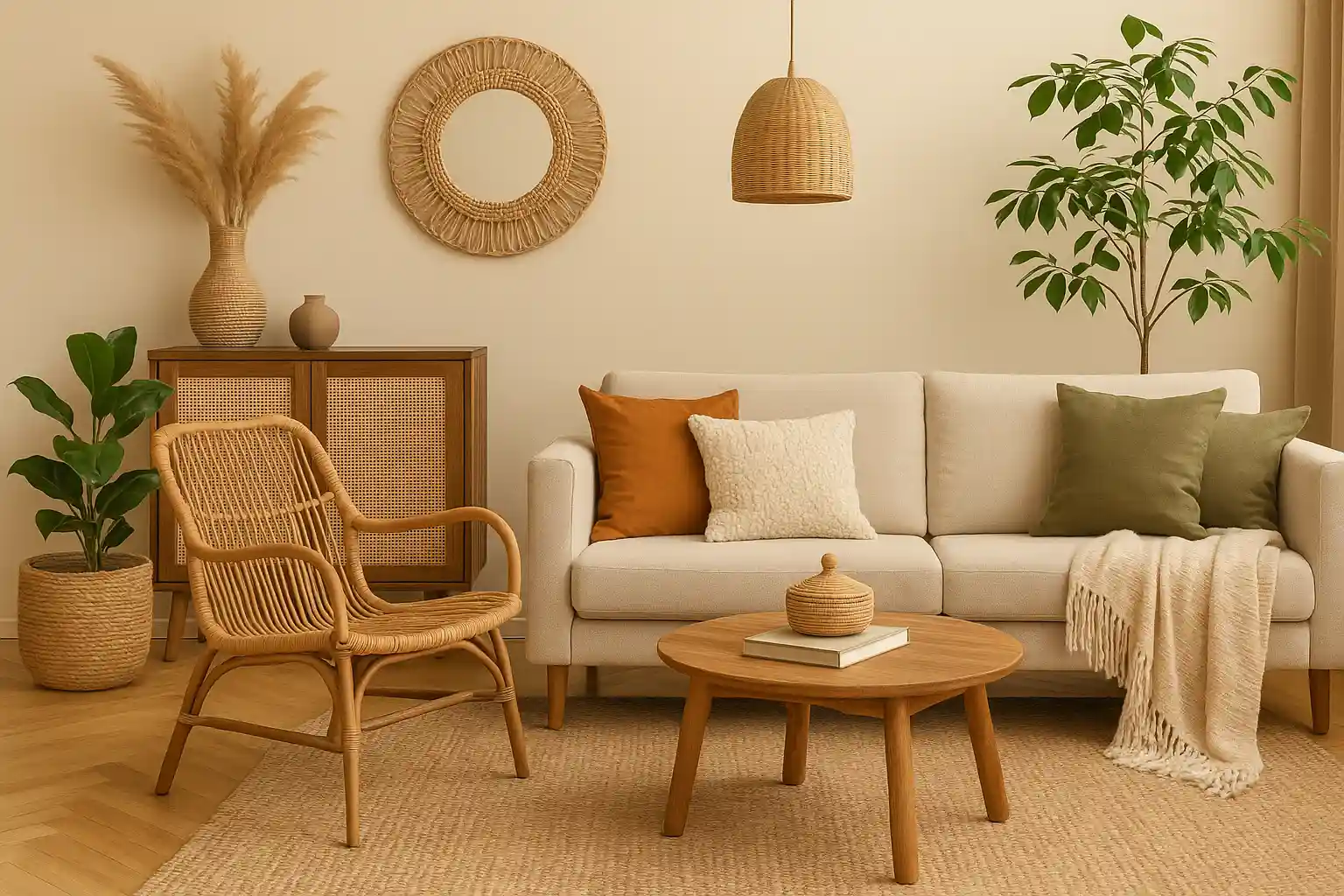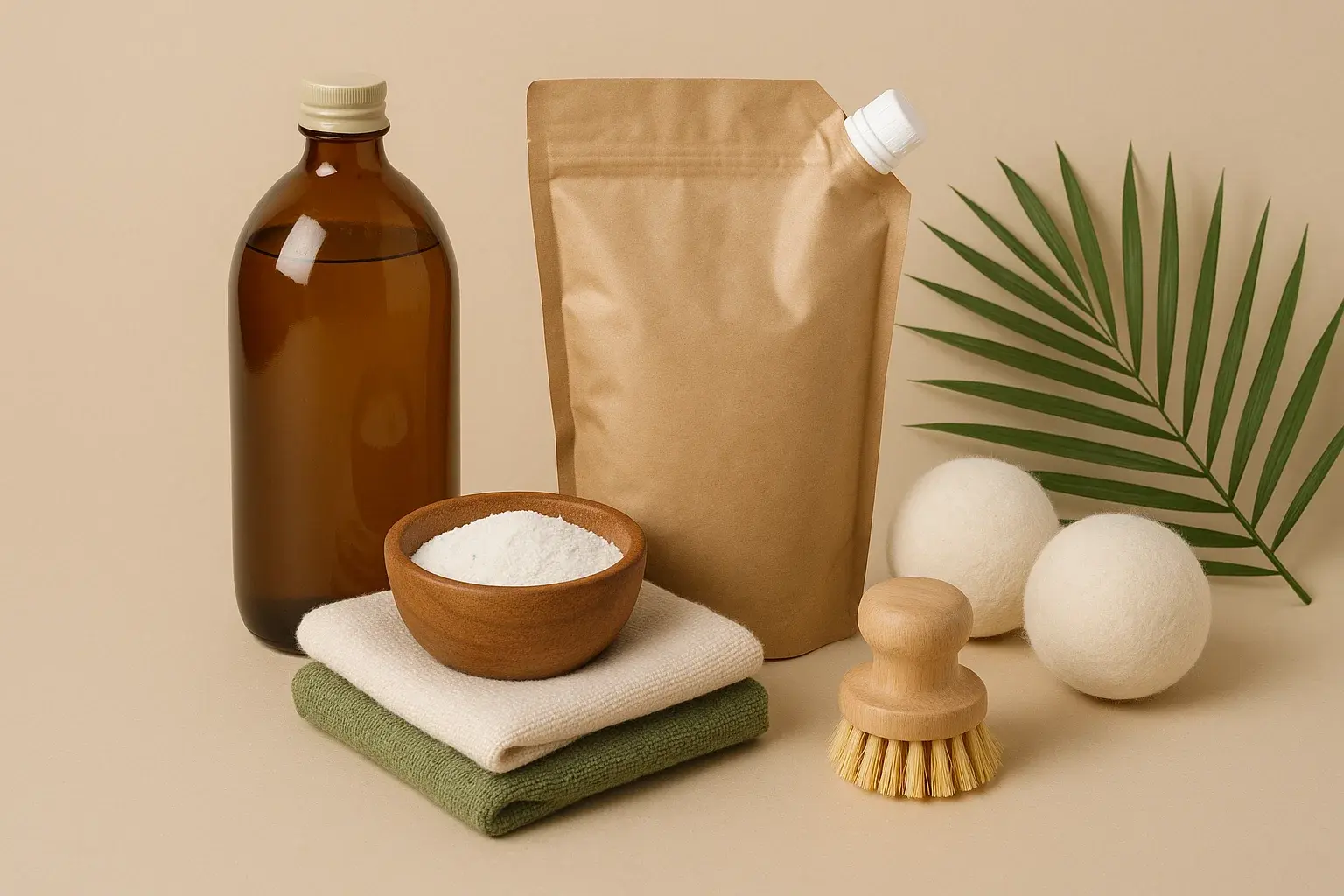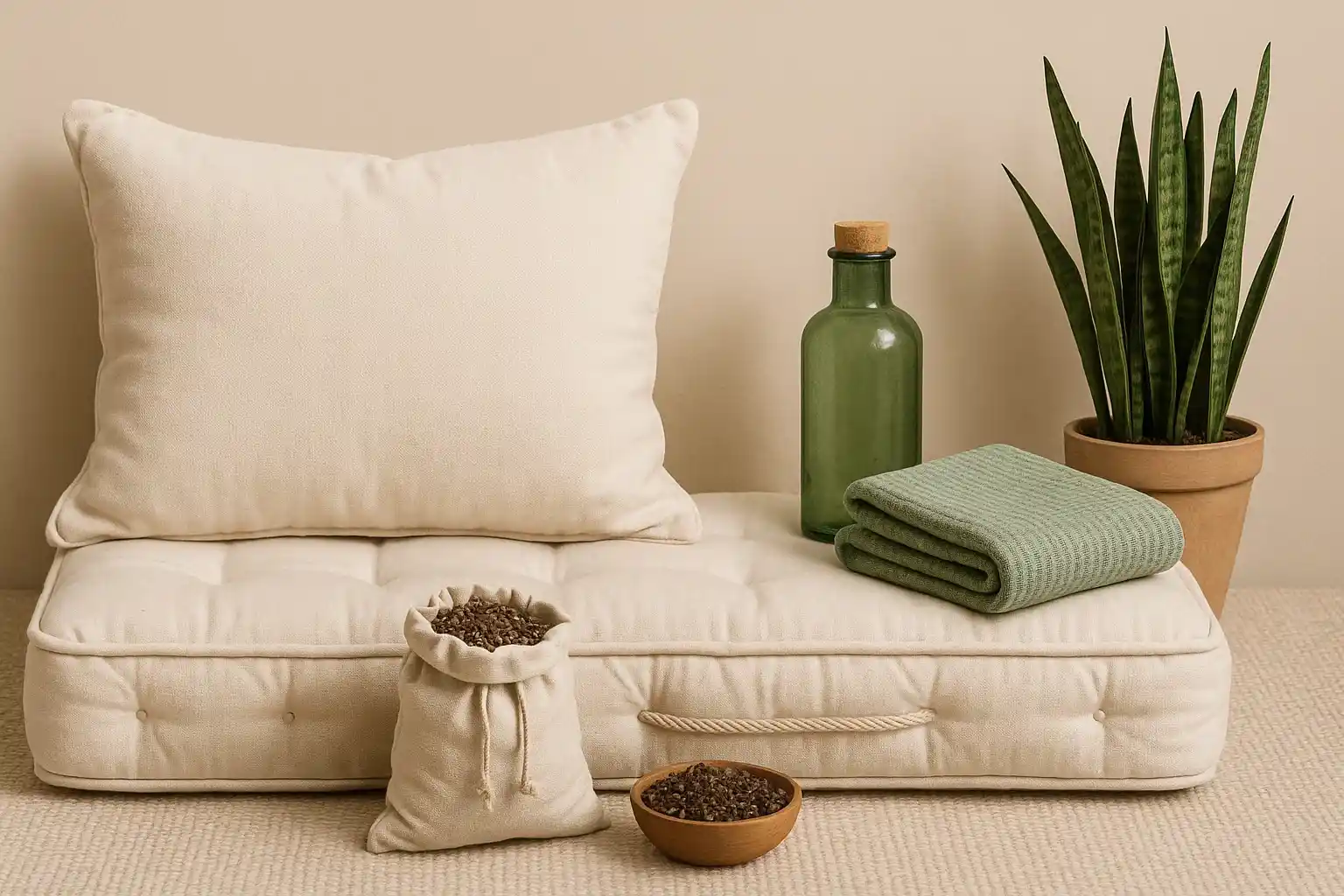Sleeping Soundly, Sustainably: Exploring the World of Eco-Friendly Bedding

Our beds are our sanctuaries, the places where we seek rest and rejuvenation. We carefully choose mattresses for comfort and pillows for support, but often, the bedding that envelops us – the sheets, blankets, and duvet covers – receives less scrutiny from a sustainability perspective. Yet, the materials we choose for our bedding can have a significant impact on the environment and even our health.
This exploration delves into the world of sustainable bedding, spotlighting eco-friendly materials like organic cotton, hemp, and others that offer a gentler footprint on the planet without compromising comfort or quality. Our aim is to provide you with valuable insights that will not only educate but also encourage and guide you in creating a sleep environment that aligns with your values of sustainability.
Beyond Thread Count: Understanding Sustainable Bedding Materials
The journey to sustainable bedding begins with understanding the materials themselves and how they are produced. Conventional bedding often relies on materials like conventionally grown cotton and synthetic fibers, which can have considerable environmental drawbacks.
- Conventional Cotton: While known for its softness, conventional cotton cultivation often involves the heavy use of pesticides, herbicides, and synthetic fertilizers, which can pollute water sources, harm biodiversity, and pose health risks to farmers.
- Synthetic Fibers (Polyester, Nylon): These are typically derived from petroleum, a non-renewable resource. Their production is energy-intensive, and they are not biodegradable, contributing to plastic waste in landfills.
Sustainable bedding offers alternatives that aim to minimize these negative impacts. Let's explore some key eco-friendly options:
The Gentle Touch of Organic Cotton
Organic cotton is grown without the use of synthetic pesticides, herbicides, or genetically modified organisms (GMOs). This farming method promotes soil health, conserves water, and protects biodiversity. Bedding made from organic cotton is often softer and more breathable than conventional cotton, and it's a healthier choice as it's free from potentially harmful chemical residues. Look for certifications like GOTS (Global Organic Textile Standard) to ensure the cotton has been processed according to stringent environmental and social criteria.
The Resilient Strength of Hemp
Hemp is a remarkably sustainable crop. It requires little water, no pesticides or herbicides, and enriches the soil as it grows. Hemp fibers are incredibly strong and durable, making hemp bedding long-lasting. While it might feel slightly textured initially, hemp fabric softens beautifully with each wash, offering a unique and comfortable feel. Its breathability and moisture-wicking properties also make it a great choice for comfortable sleep.
The Silken Smoothness of Bamboo (Lyocell/Tencel)
While the processing of bamboo into fabric can vary in its environmental impact, lyocell (often made from bamboo or other wood pulp) and Tencel are considered sustainable options. These fabrics are produced in a closed-loop system that recycles water and solvents, minimizing waste. Bamboo lyocell and Tencel are known for their exceptional softness, breathability, and moisture-wicking abilities, making them ideal for bedding. They also have a beautiful drape and a gentle sheen.
The Warmth of Recycled Materials
Sustainability also extends to utilizing recycled materials. Bedding made from recycled polyester or other recycled fibers helps to divert waste from landfills and reduces the need for virgin resources. While perhaps not always as naturally sourced as organic cotton or hemp, recycled options play an important role in a circular economy.
Beyond Materials: Holistic Sustainability in Bedding
Choosing sustainable bedding goes beyond just the fabric. Consider these additional factors:
- Ethical Production: Look for brands that prioritize fair labor practices and safe working conditions throughout their supply chain. Certifications like Fair Trade can provide assurance in this area.
- Low-Impact Dyes: Conventional dyeing processes can use harsh chemicals and large amounts of water. Opt for bedding made with low-impact or natural dyes.
- Minimal and Sustainable Packaging: Brands committed to sustainability often extend their ethos to their packaging, using recycled or biodegradable materials and minimizing unnecessary packaging.
- Durability and Longevity: Investing in high-quality, sustainable bedding that is built to last is inherently more eco-friendly than frequently replacing cheaper, less durable options.
Creating Your Sustainable Sleep Sanctuary
Transitioning to sustainable bedding can be a gradual and rewarding process. Here are some ways to begin:
- Start with Sheets: Sheets are in direct contact with your skin, making them a great place to start your sustainable bedding journey. Consider organic cotton, hemp, or bamboo lyocell options.
- Explore Sustainable Filling: When it comes to comforters and pillows, look for fillings made from organic cotton, kapok (a natural fiber from the kapok tree), or recycled materials.
- Invest in Quality: Choose bedding that is well-made and designed to last. While the initial investment might be slightly higher, the longevity and reduced need for replacement make it a more sustainable choice in the long run.
- Research Brands: Look for brands that are transparent about their sustainability practices, certifications, and ethical sourcing.
Resting Easy with Sustainable Choices
Choosing sustainable bedding is an investment in your well-being and the health of the planet. By opting for materials like organic cotton, hemp, and bamboo lyocell, and by considering ethical production and longevity, you can create a sleep sanctuary that is not only comfortable but also aligns with your commitment to a more sustainable lifestyle. The choices we make, even in the quiet realm of our bedrooms, have the power to contribute to a healthier and more environmentally conscious world. Embracing sustainable bedding allows us to rest easy, knowing that our comfort doesn't come at an undue cost to the Earth.
Related Blogs

5 Home Decor Trends That Nurture Your Space and the Planet
Insights on 5 home decor trends that are also earth-friendly in a sustainable way.

Laying the Foundation for a Greener Home: Your Eco Starter Kit
Insights on building an eco starter kit for your home in a sustainable way.

Step Softly on the Earth: Upgrading Your Home with Natural Floor Rugs
Choose biodegradable and non-toxic jute, organic cotton, or wool rugs over synthetic options.

Clean Laundry, Clear Conscience: Sustainable Swaps for Conventional Detergents
Switch to soap nuts, eco-enzyme cleaners, or plant-based detergents for toxin-free laundry.

Breathing Easier, Living Greener: The World of Eco Paints and Finishes for a Healthier Home
Insights on eco paints and finishes for a healthier home in a sustainable way.

Dreaming of a Greener Sleep: Choosing Natural Mattress Toppers for a Healthier Bed
Upgrade your sleep with non-toxic, breathable, and biodegradable latex, organic cotton, or wool toppers.
Stay in the Loop
Get tips and insights tailored to your interests — no spam, just sustainability.